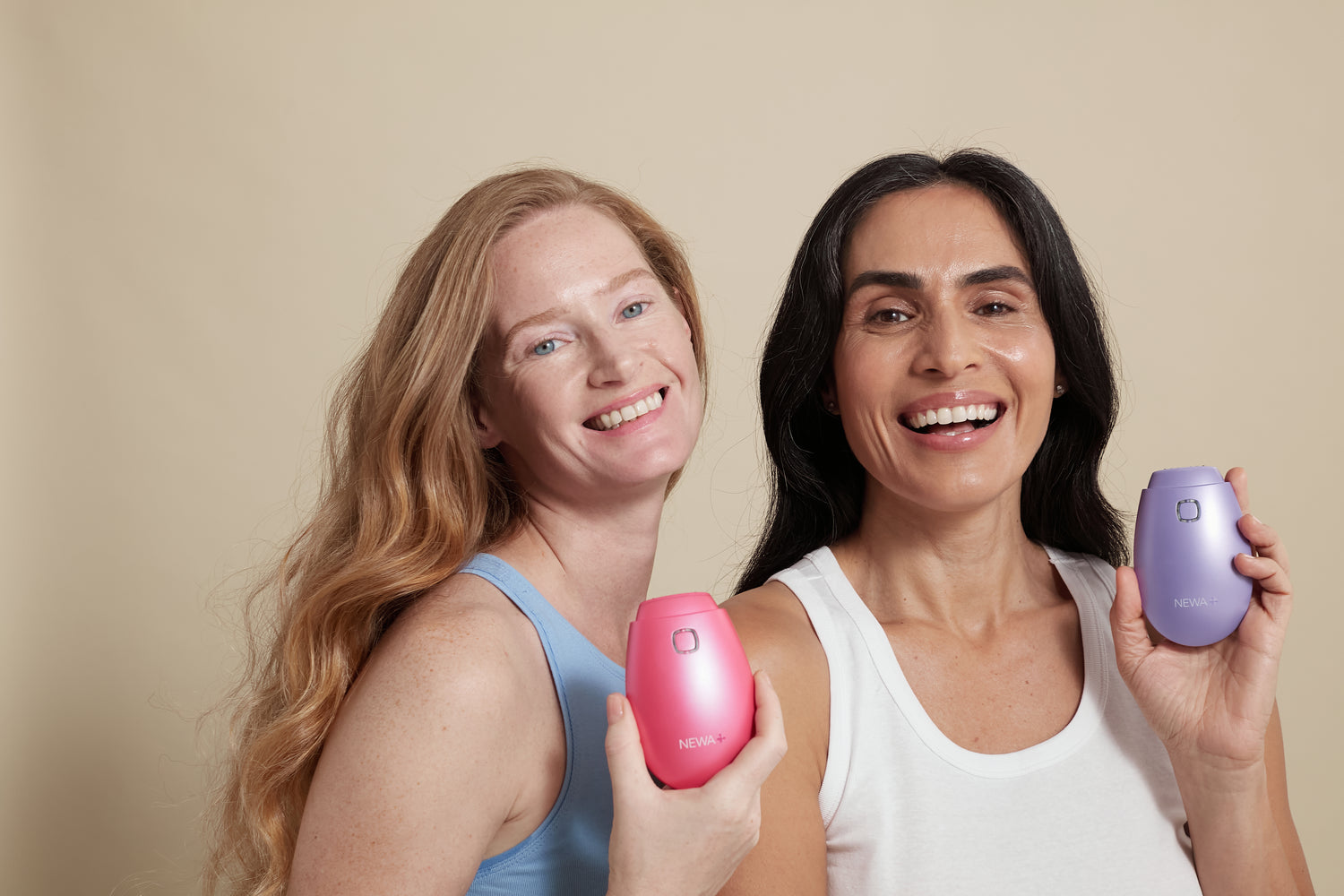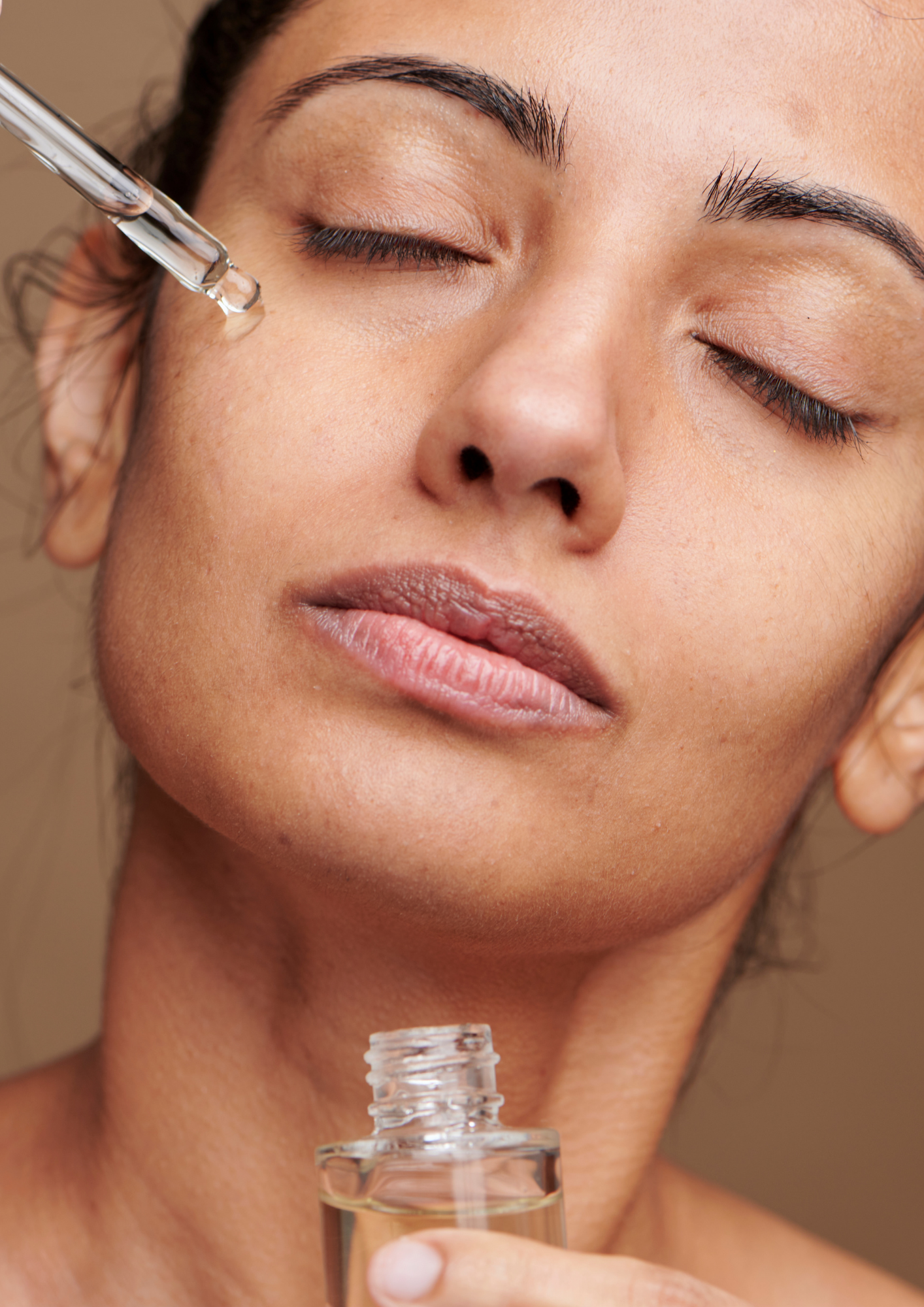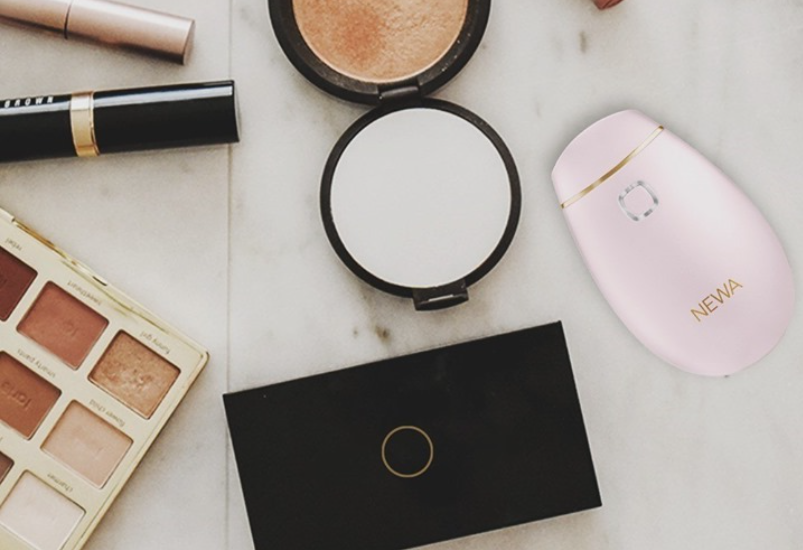What is anti aging skin care?
Let’s make one thing clear from the start: nothing can really stop us from aging. The passing of time and its effects on our skin is a natural and inevitable process that can be explained in two folds: intrinsic and extrinsic aging.
Intrinsic aging, also known as chronological aging, comes from within: as we grow older, our bodies produce less collagen and elastin, two proteins responsible for skin firmness and elasticity. Extrinsic aging refers to the environmental factors that cause premature rapid aging like sun, smoking, and pollution.
Although we can’t stop intrinsic aging from happening, using various skincare products and solutions, we can help boost our body’s natural processes and fight environmental factors in order to maintain younger and healthier looking skin as we age. In other words, anti aging skin care refers to skin care habits that are intended to reduce the appearance of signs of aging such as wrinkles and fine lines but also pigmentation and sagging among others.
The benefits of starting anti aging skin care routine early
An effective anti aging skin care routine doesn’t start when wrinkles deepen on your face. Being proactive is key if you want your skin to age gracefully. That’s why caring for your skin properly and taking into consideration its specific needs from an early age can do wonders for your face.
As mentioned above, the loss of collagen and elastin in our skin is a major factor that causes the appearance of signs of aging on our faces. In fact, collagen production starts to decline as early as between the ages of 20 and 30, and fast: we lose about 1% of it every year. As a result, the skin becomes thinner and more lines and wrinkles appear.
That’s why it is quite smart to start helping your skin produce more collagen already in your 20s or 30s, even if you do not notice any signs of aging yet. The earlier you start, the slower such signs will start to appear and the less severe they will be.
Must-haves for the best anti aging skin care routine
Sunscreen at every age
No surprises here, the sun is the skin’s biggest enemy. It is the main culprit when it comes to extrinsic aging because the sun’s UVA and UVB rays induce the activity of MMPs – matrix metalloproteinase– which break down the skin’s collagen further.
As such, protecting your skin from these rays should go without saying and is perhaps the best prevention tool for signs of aging such as wrinkles, pigmentation and fine lines.
There are many creams, lotions and gels out there containing SPF to choose from according to what suits your skin type, lifestyle and age. Whether you are in your 20s, 30s, 40s, 50s or 60s, using SPF should be a daily skincare ritual.
It should be applied in the morning under your moisturizer and reapplied throughout the day if needed – in the summer, for example, you may want to reapply, especially if you are spending time outdoors. And don’t forget: even on rainy winter days, there is always sunshine outside!
An effective moisturizer
Making sure your skin is always hydrated with a daily moisturizer is also a great way to prevent sagging and wrinkles. When our skin is dehydrated, more wrinkles and fine lines tend to appear. As we age, the skin’s ability to retain moisture also declines. So moisturizing may seem basic, but it’s an important step for a natural anti aging skin care routine.
What is the best facial moisturizer for someone in their 20s? And in their 60s? It depends on your skin type at every age as well as your lifestyle and preferences. With all the formulas available on the shelves today, you can experiment and find the one that feels best to you. You may be looking for a rich moisturizer if you have dry skin or a moisturizer suited for an anti aging skin care routine for sensitive skin, for example.
Proper Cleansing
As you now know, environmental factors and pollution can damage the skin and contribute to the appearance of signs of aging. That means cleansing is also an important part of any anti aging skin care regimen, day and night! A proper cleanse will not only ensure your skin is free from harmful substances, but will also allow other products you use to penetrate the skin better and be more effective.
This brings us to removing makeup: we know it’s tempting to skip the makeup removal after a late night and go to bed but it’s probably the worst thing you can do for your skin, especially when trying to minimize signs of aging. Nighttime is when skin cell turnover happens and leaving makeup clogging your pore only makes the processes more strenuous.
Here too, there is a wide range of cleanser formulas to choose from: depending on your age and skin concerns, you can find the one that’s most appropriate for you in your 20s, 30s, 40s, 50s, 60s and beyond!
Radiofrequency therapy
Radiofrequency therapy is not only a great way to treat signs of aging such as wrinkles and sagging of the skin, but it also significantly helps with prevention. It is available in clinics but you can also perform RF treatments at home with technologies such as the NEWA skin RF wrinkle reduction device, which works by using energy waves, known as radio waves.
These waves penetrate our skin into its deeper layer – the Dermis – where they help boost the production of collagen and elastin, proteins responsible for firming, tightening and plumping the skin. It is pain-free and requires no down time.
You can use NEWA from the comfort of your couch knowing it is clinically proven to work. In fact, radio frequency’s effect on skin has been well documented over the past 20 years.
According to a clinical study submitted to the FDA with individuals who used NEWA over a period of three months (3 times a week for the first 4 weeks and twice a week for the remaining 8 weeks), the NEWA RF results are clear: 100% of participants showed improvement in overall wrinkle appearance. In addition, 84% showed improvement in skin firmness and 75.6% showed an increase in skin collagen content. In fact, NEWA’s RF wrinkle reduction device was also proven to generate 3.8% collagen production in the skin over 12 weeks. That’s almost four years of natural collagen loss. And here too, starting early is an advantage: Collagen formation can come some 4 to 6 weeks after each NEWA treatment. So this means that after a month, you’re going to just start seeing the effects of the very first cycle you did. This long term effect is why NEWA is also great for preventing facial aging signs.
Microcurrent treatments
Microcurrent is a technology that uses low level electrical current that mimics the body’s natural current. Originally, this technology was developed to treat Bell’s Palsy patients who had sudden paralysis or weakness in facial muscles, but in recent years it has also become a popular skin tightening treatment and devices are available for at-home use as well.
This technology claims to re-educate the facial muscles to shorten or to lengthen which can result in a tightening effect, and thus minimizing the appearance of signs of aging as well as sagging. You may see some short term results, though microcurrent treatments are traditionally completed in a series and require maintenance. Unlike RF, microcurrent gives more short-term results because the treatment focuses on stimulating the muscles under the skin to tighten them. That’s the main difference between microcurrent vs RF.
You should also note that microcurrent and RF treatments are not only compatible but also enhance each other’s results by targeting different areas of concern and layers of the skin, so using them together is a great idea! NEWA treatments can be performed before or in between microcurrent treatments to increase the results while allowing the muscle to rest.
Retinoids
Retinoids are well known for being a holy grail anti-aging solution. Retinoids are an ingredient used in skincare products and come from vitamin A, which is important not just for the skin but also for our vision, growth, reproduction, immune system and more. Vitamin A cannot be produced by the body; which is why it needs to be supplied. When it comes to the skin, this ingredient improves the appearance of wrinkles and combats sagging by triggering collagen production in our bodies.
Retinoids come in various forms to be applied topically. They also vary in strengths.
It is important to use these collagen-boosting ingredients as directed by a professional because the formulas can be irritating for the skin. They usually require a very small amount and it is important to use them only at night, because retinoids break down with sun exposure. It can take a few weeks to see results, but if you stop using your retinoid product, the youth-boosting effects will stop too.
Treating your skin concerns at every age
Skin concerns change with time. Sometimes, they can vary from season to season or month to month. A part of a good anti aging skin care routine, besides the basics we mentioned above, is also responding to your skin’s needs at every age. If you are experiencing acne, you may want to add a product or treatment to treat acne and have an anti aging and acne skin care routine. If pigmentation is a skin concern for you, brightening products may be an important addition.
The principle is simple: each skin, no matter the age, has different needs. There is no one-formula-fits-all when it comes to maintaining younger-looking skin: if you leave your skin issues untreated, it simply won’t look youthful, even if you use sunscreen, properly moisturizer and cleanse or do radiofrequency therapy.
FAQs
What is the best anti aging skin care routine?
As you may now have understood, there is no one formula for all. Besides the basics such as cleansing, moisturizing and using sunscreen daily, you may want to consider radiofrequency therapy at home or microcurrent devices. But most of all: don’t ignore your specific skin concerns to fit into a cookie-cutter solution!
How do I start an anti-aging routine?
Cleansing well, moisturizing and using sunscreen daily, is a great start! Then, trying Radiofrequency therapy at home with NEWA or treating your skin with microcurrent devices can do wonders for boosting your skin’s collagen production and help minimize the appearance of wrinkles and fine lines over time.
How can I restore collagen in my face?
A great natural solution to restoring collagen in your face is radiofrequency therapy. Using NEWA’s RF wrinkle reduction device at home is proven to generate 3.8% collagen production in the skin over 12 weeks. That’s almost four years of natural collagen loss. Keep in mind that as for any treatment, consistency is key.
Why is my face aging so fast?
If you are experiencing premature signs of aging, first take a look at your skincare routine: are you cleansing properly? Is your moisturizer doing its job or is your skin feeling dry? Have you been using sunscreen every single day? These are easy steps you can take if you haven’t already for an affordable anti aging skin care routine. But don’t be too hard on yourself: genetics also play a role when it comes to premature wrinkles or sagging, and that is definitely out of your control. Following the steps in this article however can really help minimize the appearance of signs of aging and help your skin look younger.
What foods help anti-aging?
Some foods are known to help rebuild collagen in our bodies, which is great for anti aging. These include: bone broth, chicken, fish, egg whites, citrus, berries, tropical fruits, garlic, spinach, kale, cashews, tomatoes and peppers. Conversely, sugar and refined carbs can damage collagen content in our bodies.
Conclusion
Having an anti aging skin care routine is important if you want to minimize and delay the appearance of signs of aging including wrinkles, fine lines, sagging or pigmentation among others. And it doesn’t have to be complicated at all: cleansing, moisturizing, and using sunscreen are great basic principles. Using radiofrequency therapy devices such as the NEWA RF wrinkle reduction device at home can also really help you maintain youthful skin, boosting collagen overtime. It’s never too early to start: prevention is key when it comes to anti aging habits in your skincare regimen!
Sources used in this article




